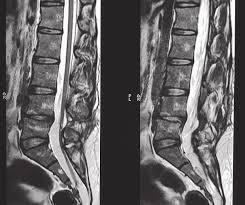TETHERED CORD SYNDROME IN ADULTS
DR. PREM PILLAY, SENIOR NEUROSURGEON
TETHERED CORD SYNDROME (TCS) EXPERT
 Tethered cord syndrome (TCS) in adults represents a rare yet significant neurological condition characterized by the spinal cord’s abnormal fixation within the spinal canal, leading to a variety of symptoms due to the stretching or tension of the spinal cord. This article explains the clinical features, diagnostic methods, treatment options, and prognosis of adult tethered cord syndrome based on many years of experience and the latest medical research.
Tethered cord syndrome (TCS) in adults represents a rare yet significant neurological condition characterized by the spinal cord’s abnormal fixation within the spinal canal, leading to a variety of symptoms due to the stretching or tension of the spinal cord. This article explains the clinical features, diagnostic methods, treatment options, and prognosis of adult tethered cord syndrome based on many years of experience and the latest medical research.
Clinical Features:
Adult Tethered Cord Syndrome often presents differently compared to its pediatric counterpart. While pediatric TCS is typically associated with congenital defects, the adult onset can be due to congenital or acquired reasons, including trauma, tumors, or spinal surgery causing scar tissue. Common symptoms in adults include:
- Pain: Persistent lower back pain, often radiating to the legs, hips, and sometimes to the genital or rectal area. This pain is frequently exacerbated by specific movements like bending over, sitting cross-legged, or holding weight (the “3-B sign”: bending, Buddha-sitting, baby-holding).
- Neurological Deficits: Muscle atrophy, numbness, weakness, and sensory disturbances in the lower extremities. These can be patchy rather than following a specific dermatome pattern.
- Bladder and Bowel Dysfunction: Including urinary frequency, urgency, incontinence, and fecal incontinence, though these symptoms are less common than in children.
- Other Symptoms: In rare cases, upper body symptoms like chest or upper back pain have been reported, which complicates diagnosis due to the atypical presentation.
Diagnosis
Diagnosing TCS in adults can be challenging due to its rarity and non-specific symptoms. Key diagnostic tools include:
- Clinical Examination: Observing the patient’s posture, gait, reflexes, and any skin abnormalities like dimples or hairy patches over the spine.
- MRI: The primary imaging modality, revealing a low-lying conus medullaris (below L2) and often a thickened filum terminale. MRI is essential for confirming the diagnosis. X rays are not accurate in determining TCS.
- Electromyography (EMG) and Nerve Conduction Studies: To assess nerve function, particularly useful in patients with advanced stages of the syndrome.
It should be noted that many of the symptoms of adult TCS are also caused by more common problems like Lumbar Spine slipped discs or Herniated Discs, and/or Facet degeneration causing Back Pain, Leg Pain and Bladder problems. This is the more important diagnosis to assess first and treat first before assuming TCS as the cause; particularly if the MRI does not show a low-lying conus.
Treatment
The main treatment for TCS is surgical intervention, although the approach varies based on the underlying cause:
- Conservative Management: For patients with mild symptoms, observation might be recommended, especially considering the potential risks of surgery.
- Surgical Detethering: Involves opening the spinal canal to release the tethered cord. Techniques now include minimally invasive microscopic and endoscopic approaches to minimize muscle trauma and Neuro-monitoring of the nerves during surgery. Surgery aims to relieve tension on the spinal cord and halt the progression of neurological deficits.
- Spinal Column Shortening (SCS): Is the latest technique in surgery for re-tethering especially in complex tethered cord syndrome such as an associated lipomyelomeningocele. This can potentially give good results with less risk of nerve damage.
- Postoperative Care: Follow-up care is crucial due to the risk of retethering, where the spinal cord can reattach to the spine.
Prognosis
The prognosis for adult TCS is variable:
- Improvement: After surgery, many patients experience stabilization or improvement in pain, motor functions, and sometimes bladder control. However, outcomes can be less favorable if there’s a long duration of symptoms before surgery or if there are complex malformations like lipomyelomeningocele.
- Complications: These include potential neurological deterioration, wound issues, CSF leaks, and a risk of retethering. The risk of complications increases with age, particularly in older patients or those with co-morbidities.
- Long-term: Early surgical intervention tends to yield better outcomes. Patients with shorter symptom durations before surgery often experience significant relief from pain and improved neurological function.
In conclusion, adult tethered cord syndrome requires an experienced specialist approach to diagnosis, treatment, and follow-up care states Dr Prem Pillay. While surgery offers the best chance of halting disease progression and potentially reversing some symptoms, patient selection is critical, considering that similar symptoms are often from more common causes of back and leg pain such as slipped / herniated discs in the spine, the heterogeneity of outcomes influenced by factors like the duration of symptoms, the presence of complex malformations, and the patient’s age at the time of intervention. Continuous research and advancements in surgical techniques are enhancing the management and outcomes for this condition, emphasizing the importance of early diagnosis and timely surgical intervention.
With many years of experience in treating tethered cord syndrome including complex forms and access to the latest technological advancements, Dr Prem Pillay endeavours to offer patients the highest standard of care. From accurate diagnosis to tailored treatment plans, our approach aims for the best possible outcomes for individuals affected by this challenging condition.
If you or a loved one has been diagnosed with Tethered Cord syndrome, we welcome you to seek consultation with our specialized team. Together, we can develop a comprehensive evidence based and personalized treatment strategy that addresses your unique needs and provides the best chance for a positive outcome.
